A Catalan Christmas looks pretty similar to what you’d see in other Western countries: decorated trees, kids opening the 24 little windows of their Advent calendars, and streets lit up with festive lights.
But it also has its own unique (and pretty bizarre…) traditions that make it special!
Curious about what makes Christmas in Catalonia different and how you can celebrate it?
We’ve pulled together everything you need to know, from important dates to fun things to do and even some of our favourite holiday foods.
* Post written for the first time in January 2018 and updated in November 2024.
Important dates to mark in the calendar during the Catalan Christmas
Let’s start with some good news: Christmas time in Catalonia doesn’t end with New Year’s! The festive season goes all the way until Jan 6 (Kings Day), and kids don’t head back to school until Jan 7.
During this period, there are a bunch of public holidays and celebrations, with the biggest ones being:
Christmas Eve (the night of Dec 24)
In Catalonia, Christmas Eve is just as important as Christmas Day.
Families gather together, and we start the evening by beating the Tió (pooping log) good and proper to claim our hard-earned gifts. Once we’re tired from smacking it, it’s time to get some calories back!
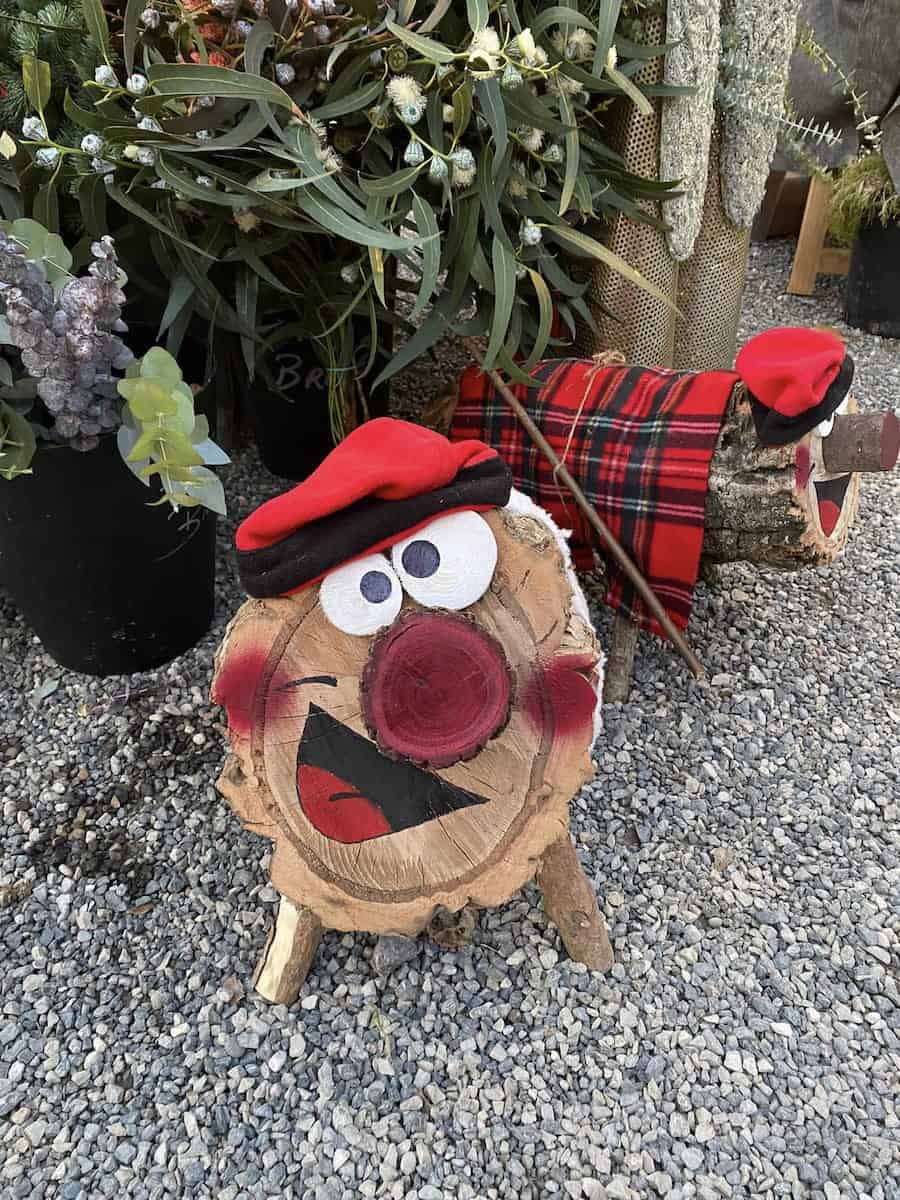
Dinner often features dishes like sopa de galets (a pasta soup) or seafood, with turró (nougat), polvorons (buttery crumbly cookies), and cava (Catalan sparkling wine) for dessert. We’ll dive into these delicacies in the culinary section below!
After the feast, the more traditional and religious people head to church for Missa del Gall (Midnight Mass) to celebrate Jesus’ birth.
Those who don’t attend the mass usually go out to visit friends or extended family
And for those ready to keep the night going, clubs in cities like Barcelona host big parties to celebrate into the early hours.
Christmas Day (Dec 25)
Dia de Nadal (Christmas Day) is a public holiday here, so most shops close, though you’ll still find attractions like Christmas markets, ice rinks, and cinemas open.
While many countries unwrap presents on Christmas Day, that’s not the main tradition in Catalonia. Here, we generally wait until Jan 6 for the Three Magics Kings to deliver gifts instead of Santa.
That said, thanks to a little global influence, Santa is becoming more common, and some families now open gifts on Christmas Day too. This way, the kids have more time to play with their new toys before returning to school!
Christmas Day itself is usually spent with close family, either at home or at a nice restaurant. As a family tradition, we like to go for a morning hike to work up an appetite!
Then, a nice lunch is mandatory! It’s typical to eat a roast or sopa de galets. For dessert, we enjoy turró and neules, and some add fresh pineapple to the mix.
The afternoon is the time to recover from a food coma by doing low-energy activities, often a Christmas movie marathon (Harry Potter is a favourite!) or a few rounds of board games.
Sant Esteve or Boxing Day (Dec 26)
Sant Esteve (Boxing Day) is also a day dedicated to the family here in Catalonia.
We gather together and enjoy a delicious meal, traditionally featuring canelons (stuffed baked pasta). It’s said this tradition started as a way to use up leftovers from Christmas (like roast and broth) to avoid wasting good food. Whether that’s true or not doesn’t matter much… What counts is how tasty they are!
Dec 26 is also a public holiday in Catalonia.
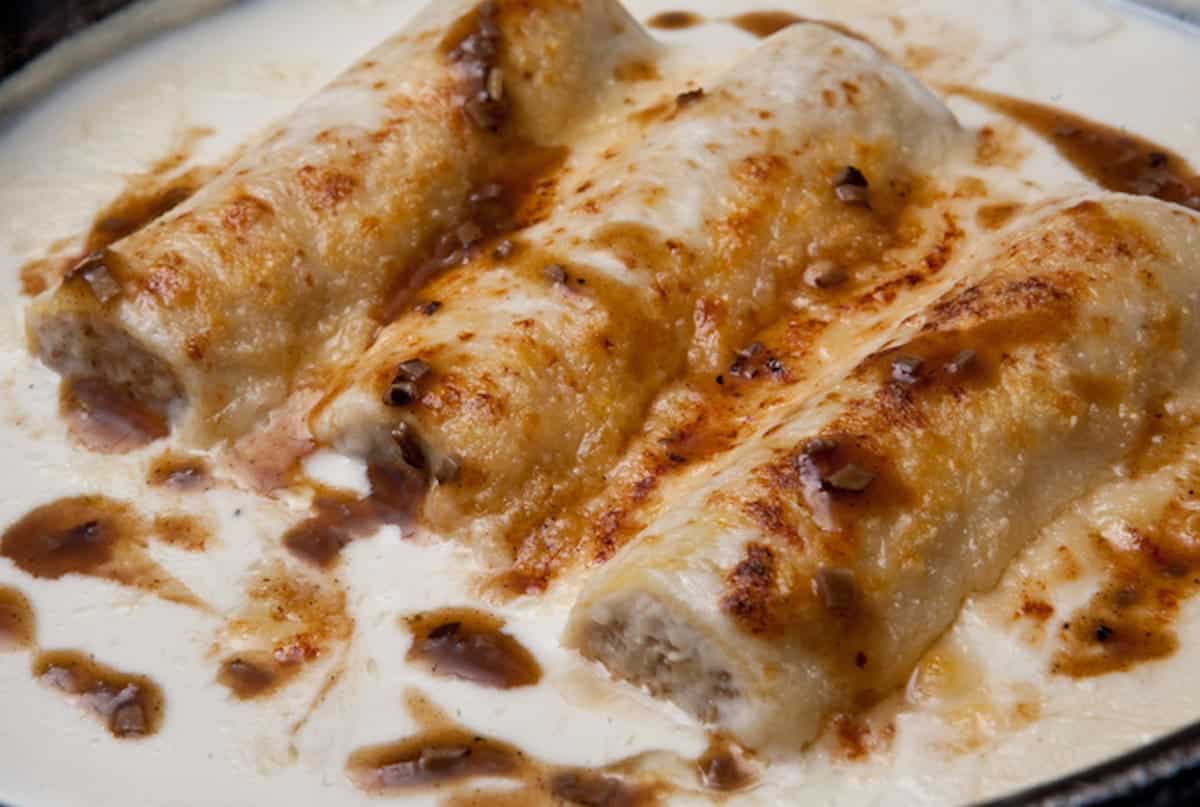
New Year’s Eve (Dec 31)
Like in many places, New Year’s Eve in Catalonia includes a nice dinner, fireworks, and plenty of partying (at home or in a club).
But one thing makes New Year’s here extra special: the 12 grapes tradition.
If you are in Catalonia on this particular date, be sure to pick up 12 grapes per person before the night begins. Then, during the last twelve seconds of the year, you’ll need to pop one grape into your mouth with each chime of the clock.
If you manage it without choking, you’ll have the best luck for the rest of the year (or at the very least, you’ll have experienced one of our quirkiest traditions without getting injured!).
New Year’s Day (Jan 1)
Jan 1st is a public holiday here, with most shops, restaurants, and bars closed. It’s the official recovery day from New Year’s Eve!
It’s also one of the best days to head out into nature or go skiing since about 80% of the population is too hungover to leave bed.
La Cavalcada (Jan 5)
On the evening of Jan 5, we celebrate the arrival of the Three Magic Kings with parades across Catalonia, featuring trucks loaded with gifts ready to be delivered.
A bunch of characters walk in the parade: mineworkers making coal for those kids who didn’t behave, patges reials (the King’s helpers) collecting the kids’ letters to the Kings, and, of course, the Kings themselves.
The characters toss sweets to the crowd, so be sure to bring a bag to collect them (and maybe a helmet if you’re a little sensitive to flying candy!).
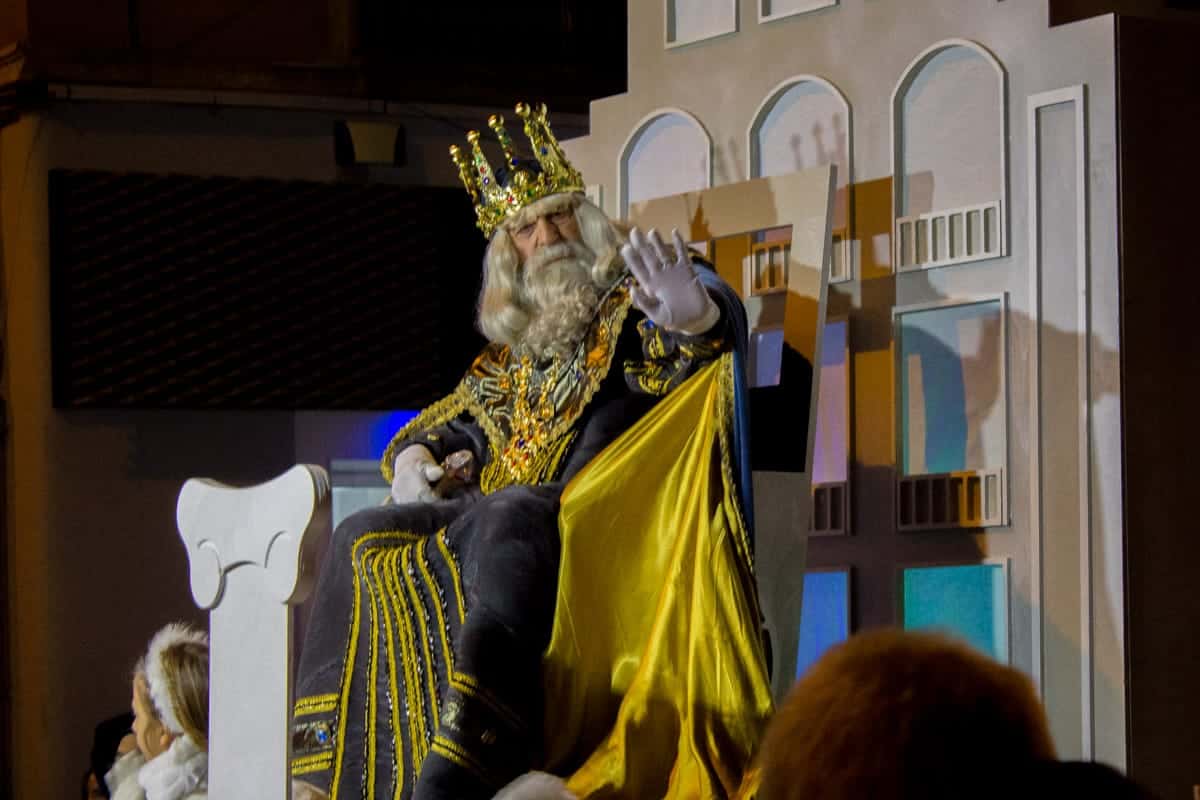
Kings Day (Jan 6)
On Jan 6, it’s finally time to open the gifts delivered by the Three Magic Kings.
Like Santa, the Kings fly on their magic camels on the night of Jan 5 to leave presents under the Christmas tree, ready for the family to discover in the morning.
After unwrapping the gifts and enjoying some family time, a big meal follows. For dessert, it’s typical to eat what we call Tortell de Reis, a special doughnut-shaped cake with a couple of surprises hidden inside…
Jan 6 is also a public holiday in Catalonia.
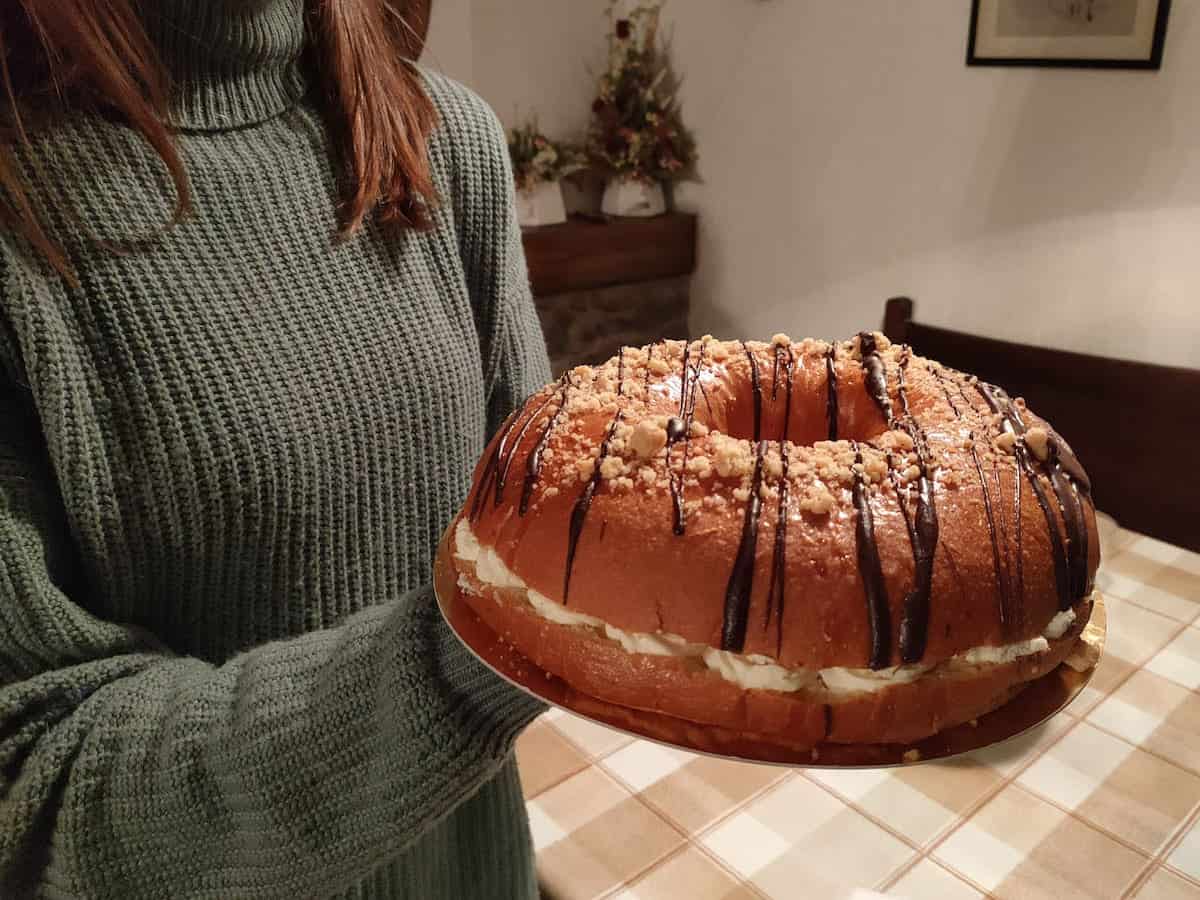
What to do for a festive Catalan Christmas
Here you have some fun activities to sprinkle some extra magic into the festive period:
Take a stroll to enjoy the Christmas lights
Is there anything more Christmasy than strolling through the streets illuminated with Christmas lights?
From late November to early January, you can enjoy a magical atmosphere in most Catalan cities and villages, where the lights are switched on until past midnight.
If you are in Barcelona on Nov 28, you can see how the Christmas lights are switched on in an event that marks the start of the festive season. The event takes place at 6 pm in Passeig de Gràcia, where you’ll also enjoy live music and various cirque performances.
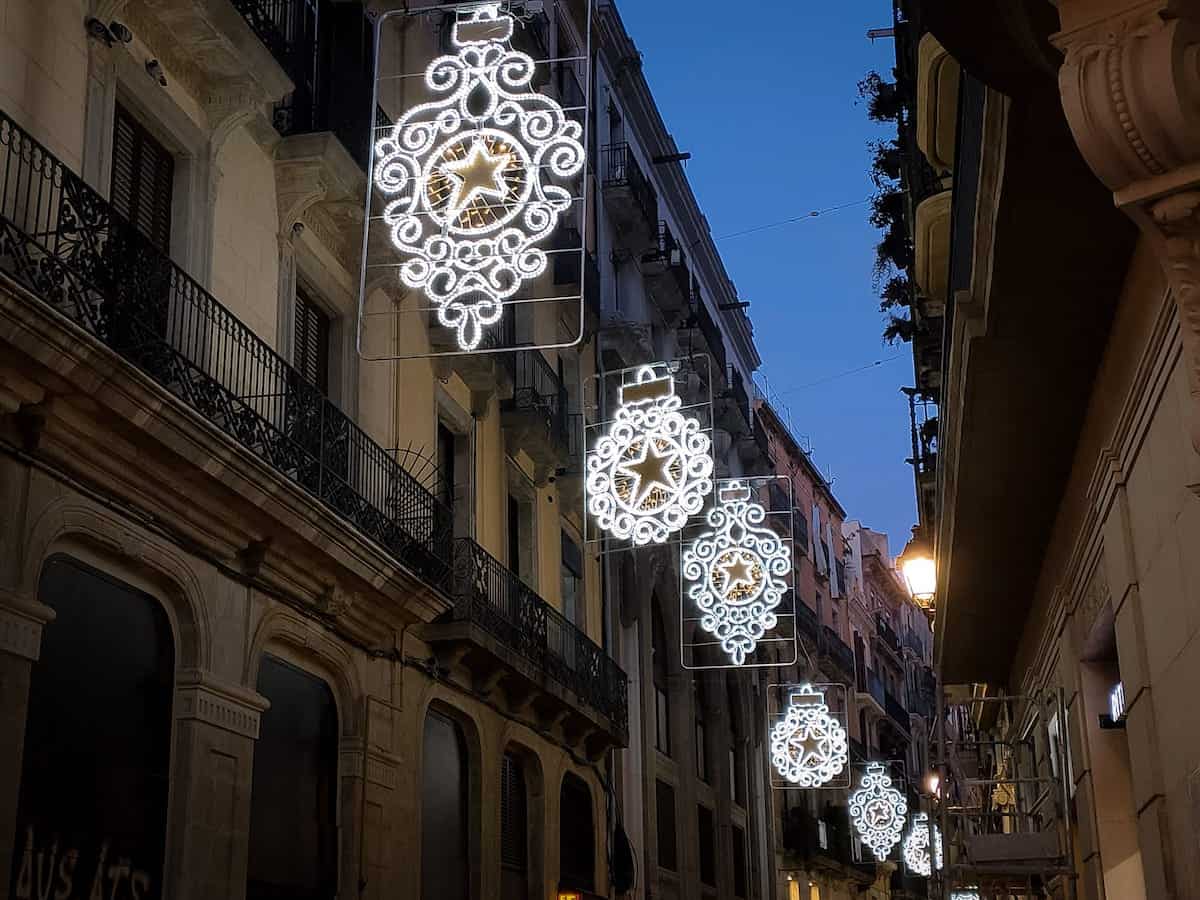
Practise your ice skating skills
One of our favourite winter activities is ice skating. So, if you’re like us, you might enjoy snuggling a couple of hours of ice skating into your trip.
You’ll find ice skating rings in most cities, like Barcelona, Lleida, and Tarragona.
Pick up a caganer and a Tió at a Catalan Christmas market
If you’re ready to bring some Catalan Christmas traditions home, a Christmas market is your first stop!
There, you’ll find the iconic Tió (the “popping log”) and the caganer (the “Christmas crapper”), along with other unique decorations.
👉🏼 Read next
Hit the slopes
The cold is no excuse to stay indoors! Catalonia is ideal for skiing and snowboarding if you fancy a day of exercise between mountains. Home to 9 ski resorts, we’re sure you’ll find one that suits your level and taste.
👉🏼 Read next
For more info about the ski resorts in the region, take a look at our guide “Where to ski in the Catalan Pyrenees: A guide to all the ski resorts in Catalonia“.
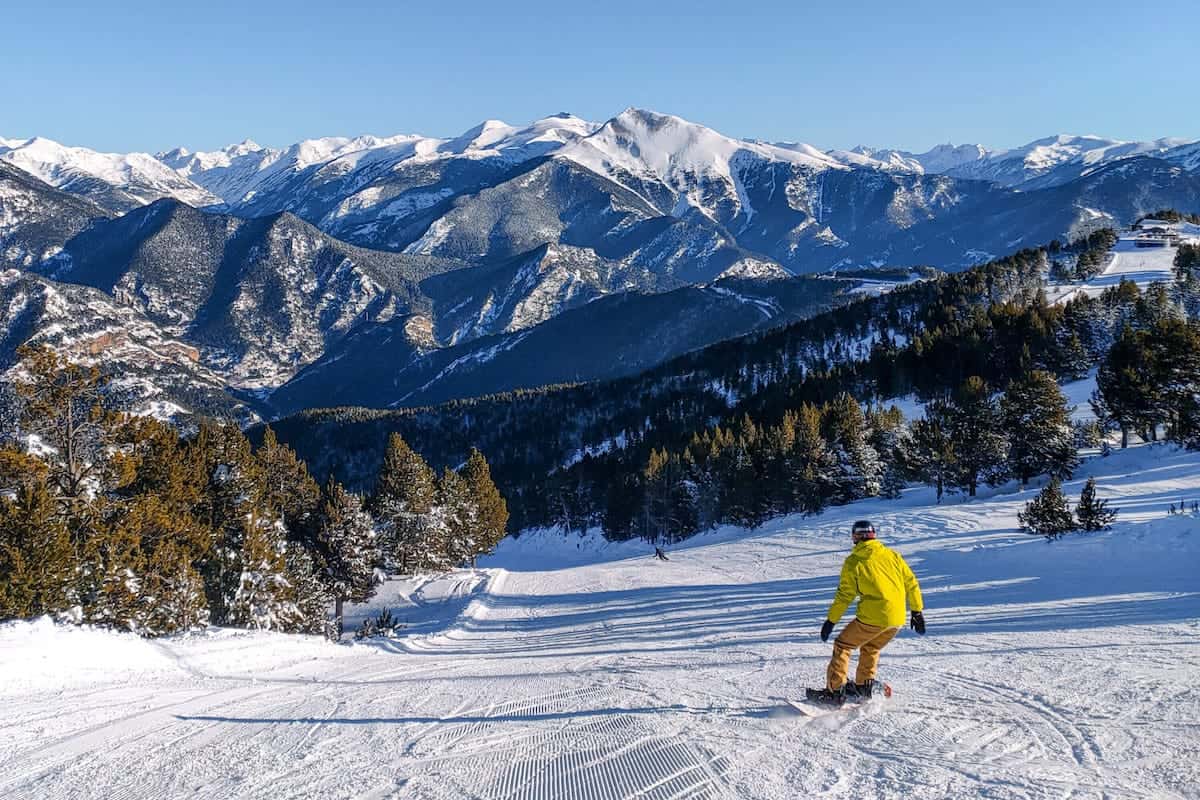
Join a swimming race in Barcelona’s harbour
Think you have what it takes to swim in the Mediterranean in December?
If the answer is yes, we’re sure you’ll love joining Barcelona’s Christmas swim (Copa Nadal), Spain’s oldest open-water race, held on Christmas Day!
The race’s distance is 200 m, and the winner gets a special Christmas present: 250€.
Catalan Christmas traditions (bizarre but fun!)
Here’s a quick rundown of some Catalan Christmas traditions that might be new to you. Spoiler: 💩 features prominently in a few of them!
- Pessebre: It consists of a representation of Jesus’ birth in Bethlehem. But the Catalan ones have a peculiar figure on the scene: the caganer, a peasant doing his business in front of the newborn Jesus!
- Caga Tió: Another tradition involving poo. Tió is a wooden log with a painted face and red hat that “poops” out presents when kids whack it with sticks while singing a special song.
- The Three Magic Kings: They were three wise men who embarked on an adventure to find the holy Messiah and bring him precious gifts. They bring gifts on Jan 6 instead of Santa, adding an extra holiday to the season.
- The 12 grapes: Catalans are too busy for hugs and champagne during the last twelve seconds of the year. We’re stuffing twelve grapes in our mouths, one per chime, because (apparently!) this will give us good luck for the year ahead.
👉🏼 Read next
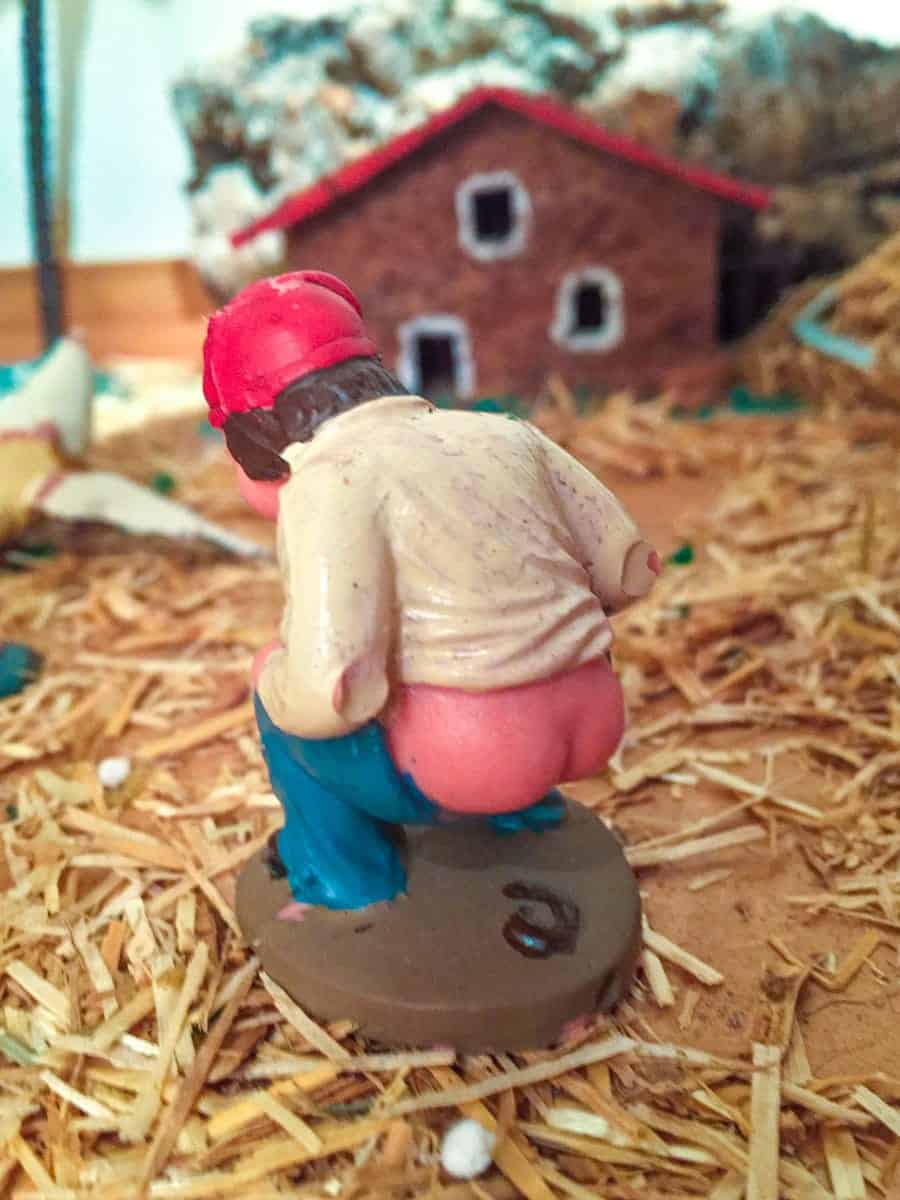
Catalan Christmas culinary traditions
We Catalans love to celebrate Christmas with long, hearty meals (as you’ve probably noticed!). Among the most traditional dishes you’ll find at the table these days are sopa de galets, canelos, turró, and neules.
If you’re visiting Catalonia during the holidays, give them all a try!
Sopa de galets (Catalan Christmas soup)
Sopa de galets (or escudella) is the star of Christmas Day.
It’s a soup made with galets, snail shell-shaped pasta that can be big or small. Smaller galets are typically paired with meatballs, while larger ones are stuffed with minced meat.
Although galets are amazing, the magic of this dish is in the broth. The more ingredients you use to make it, the better! For an authentic Christmas broth, you’ll want vegetables, poultry, and meat, along with botifarra (Catalan sausage), cansalada (bacon), or even pig’s ear!
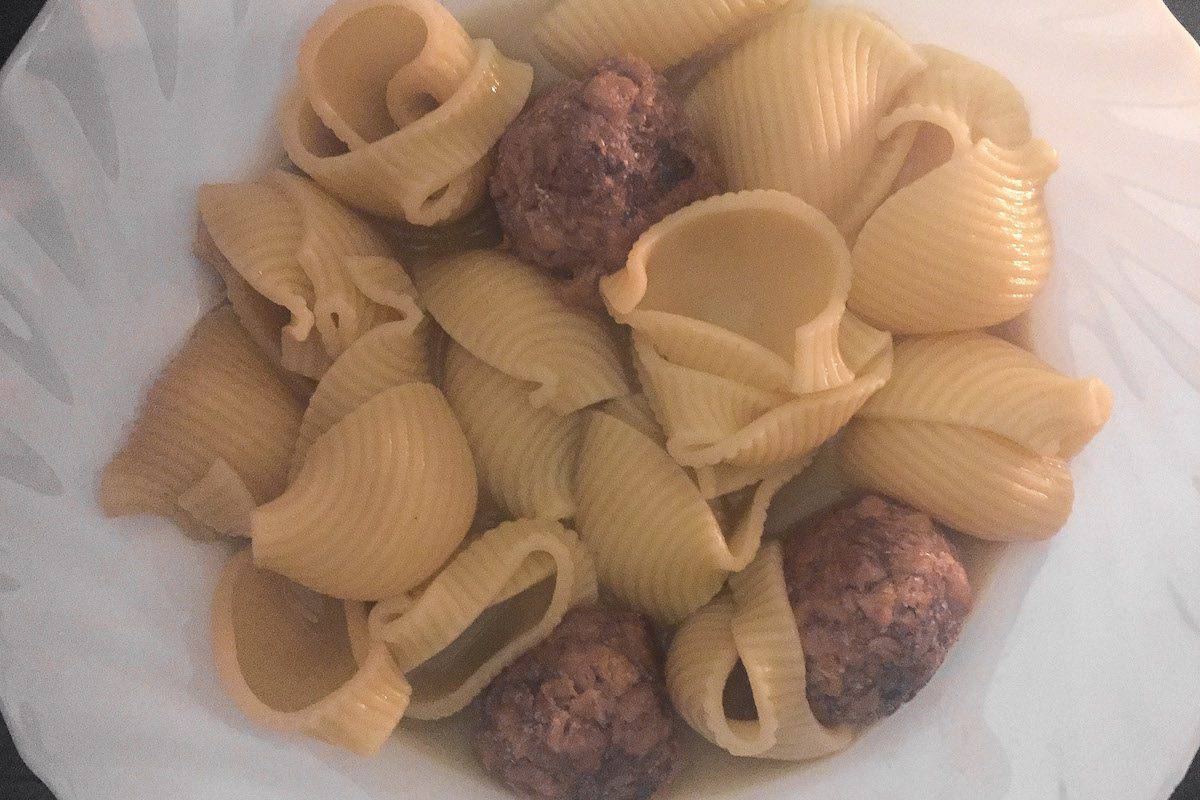
Canelons
Canelons (cannelloni) are the main protagonists of Boxing Day (Dec 26). This dish, imported by Italian chefs who worked for the bourgeoisie in the 19th century, quickly became a local favourite. And no wonder why!
Made with tubular pasta stuffed with meat and topped with béchamel and cheese, canelons now come in many variations: filled with veggies, seafood, mushrooms, and more. It’s a tough decision, but whichever you choose to try, it’ll probably be delicious!
Torró (nougat)
Turró is the dessert par excellence of the Catalan Christmas. There are innumerable variants of this dessert, but the more traditional ones are Xixona (soft and creamy nougat), Alacant (hard nougat), turró de crema (burnt egg yolk nougat), and chocolate nougat.
The theories of where turró comes from are not clear. Some say it was reserved for the wealthy Arabs, who ate it for dessert on special occasions. Others say it was used by Greek sportsmen who participated in the Olympic Games to give them energy.
According to historical writings, Christmas workers received turró as a form of payment in Spain in the 15th century.
Whatever the truth is, turró gradually became popular. Now, wealthy or not, Olympian athlete or not, everybody here eats it for Christmas!
Neules
According to legend, neules (thin rolled wafers) were created when a nun had the brilliant idea to roll a consecrated wafer. Over the years, the recipe for this rolled wafer was perfected, and it became thinner and crispier.
If you see someone grabbing a neula and dunking it into a glass of cava, don’t panic. Even in medieval times, it was normal to do so, and it looks like we haven’t changed that much!
Polvorons
Another holiday favourite, polvorons are shortbread treats made with flour, sugar, milk, and nuts, especially almonds. You can also find them in flavours like coconut and chocolate.
Cava
All right, the food is sorted. We’ve got escudella, turrons, canelons, but what about the drinks?
No Catalan Christmas meal is completed without a bottle (or two!) of cava! This bubbly drink, similar to champagne, is our preferred choice for toasting festive occasions.
In fact, Christmas is the time of the year when most bottles of cava are sold in Catalonia.
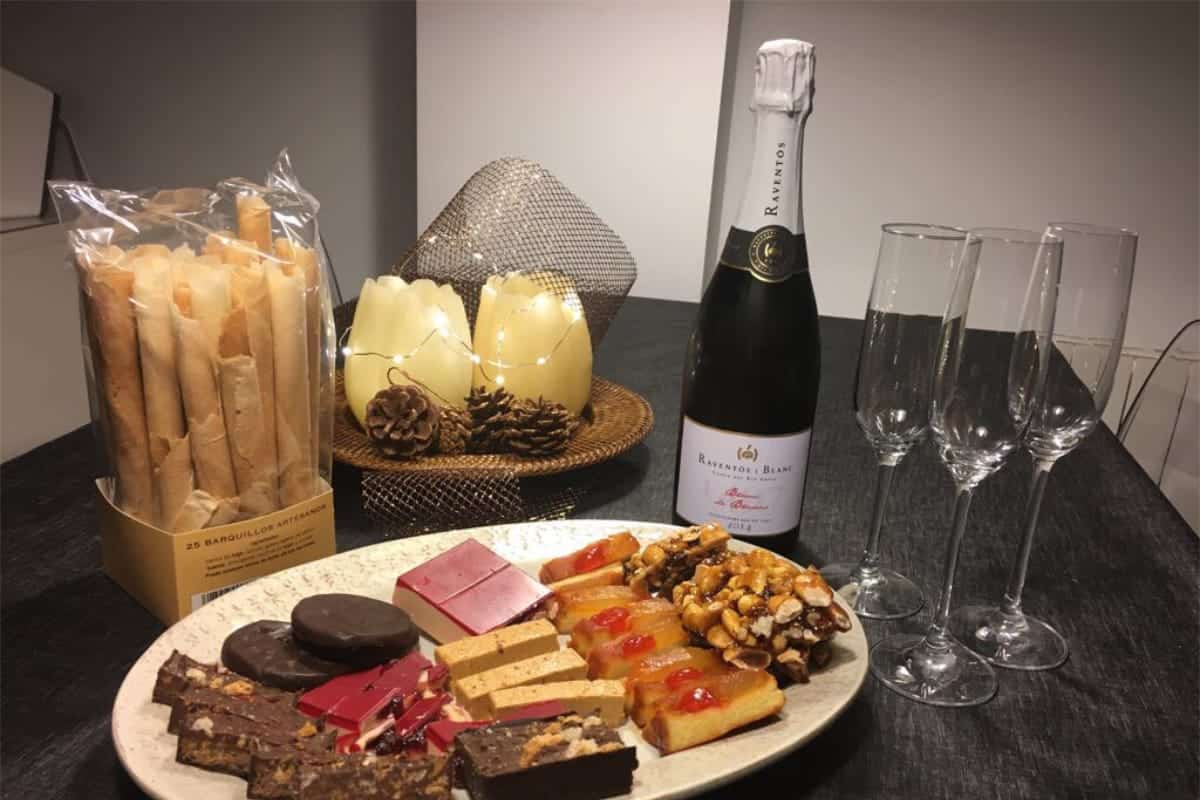
And that’s what a Catalan Christmas looks like! We hope by now that you’re looking forward to coming here and experiencing it firsthand. If this guide has been helpful, drop us a comment and share your Christmas adventures with us!
Looking for more Catalan Christmas inspo?
Here are a few more festive reads we think you’ll enjoy:
As you’ve seen, Christmas here involves a lot of food. We recommend sneaking some activities between meals to open up the appetite and enjoy the food better! Here are some suggestions:
- A beautiful 12 km hike in the Costa Brava, between the villages of Palamós and Calella
- A cycling route through fields of olive trees near Tarragona
- A day of skiing in one of the nine ski resorts in the Catalan Pyrenees
- A cycling, running, or skating adventure across Barcelona’s streets
- A skydiving experience just one hour from Barcelona


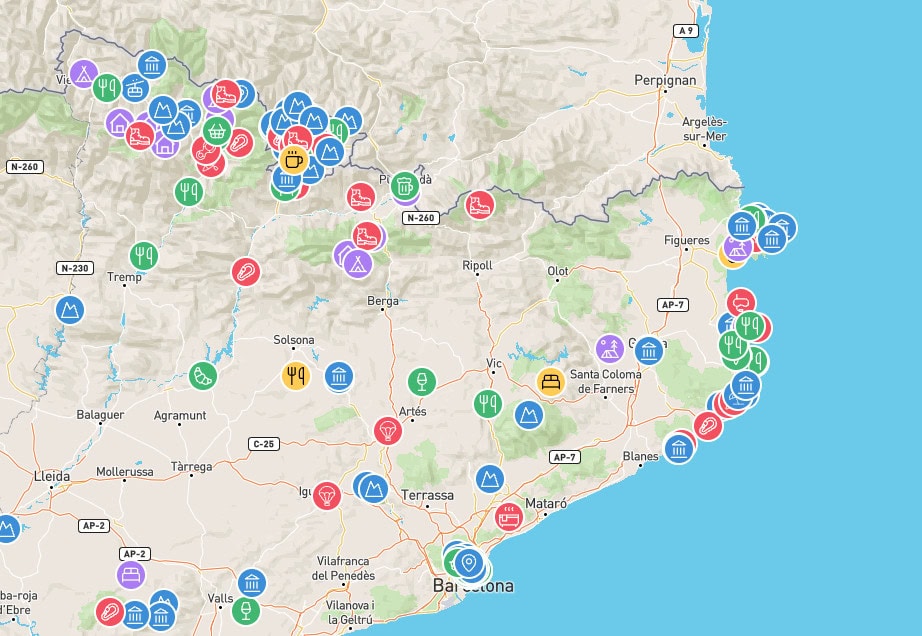
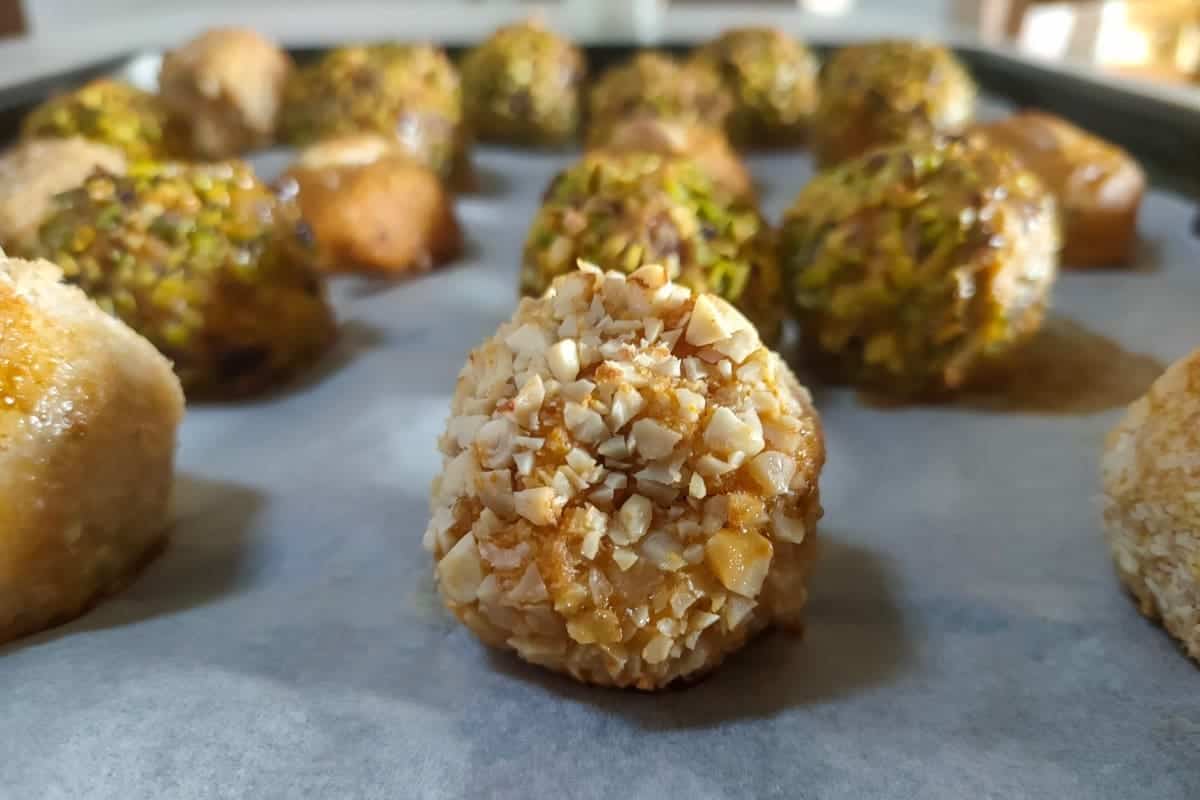
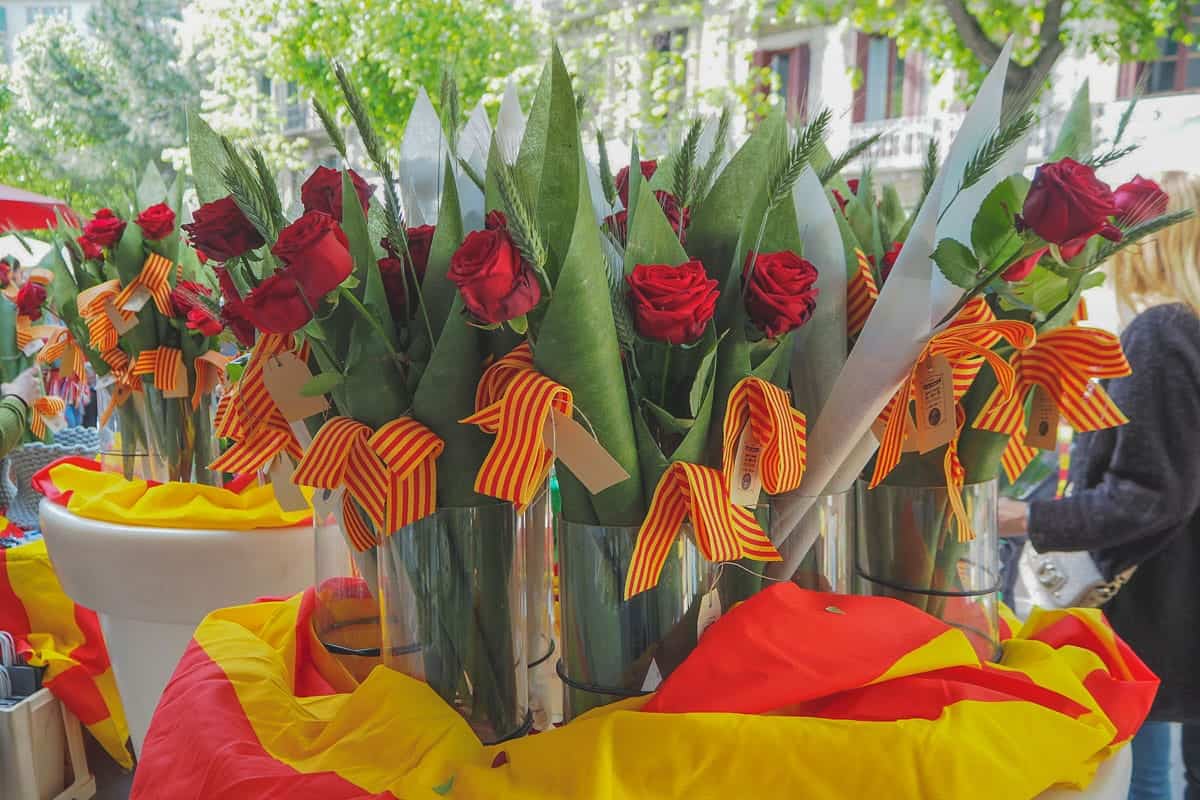
0 Comments